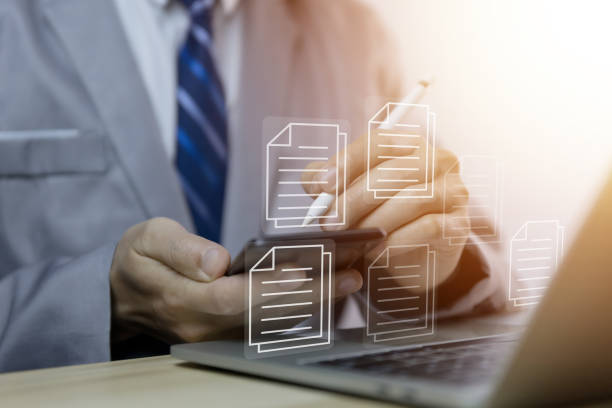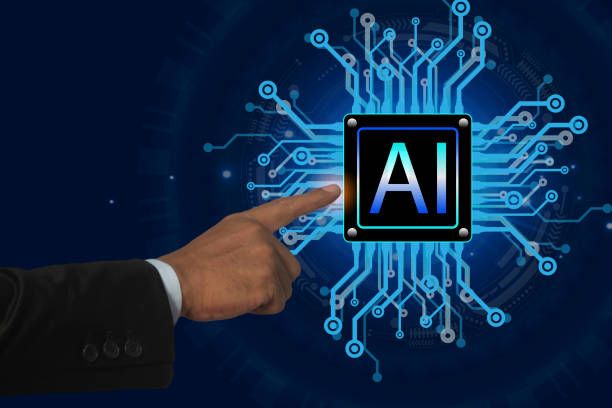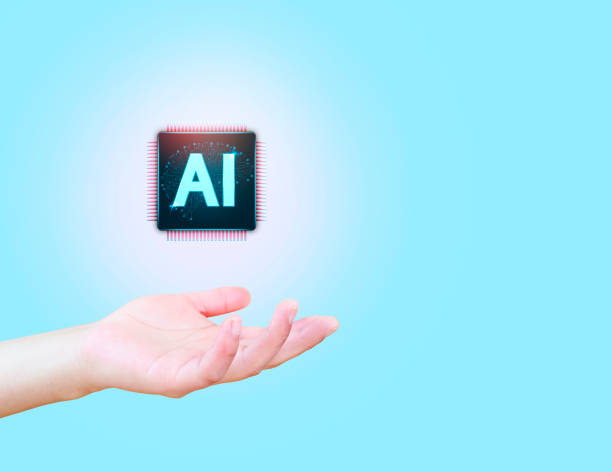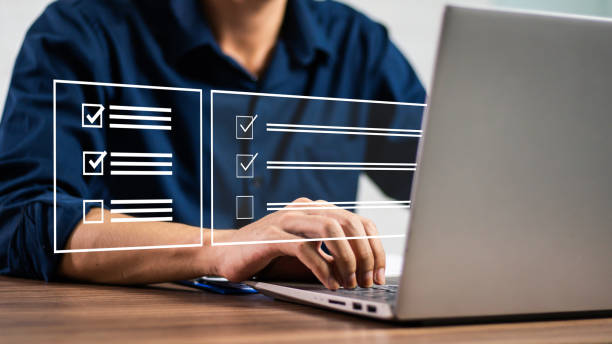Introduction to On-page SEO and Its Importance
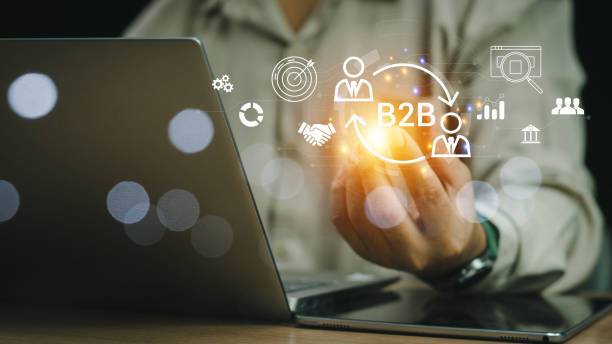
Do you know why some websites rank higher in Google search results while others remain unseen? A large part of the answer lies in On-page SEO.
On-page SEO refers to a set of actions you take within your website to improve its ranking in search engine results.
These actions include optimizing content, site structure, and HTML codes.
The main goal of on-page optimization is to send clear signals to search engines to help them better understand the content of your pages and their relevance to user searches.
This includes elements visible to users as well as elements only visible to search engines.
A deep understanding of this area is crucial for anyone looking to gain online visibility and is considered a fundamental educational aspect.
Without a strong foundation in On-page SEO, even the best off-page SEO strategies cannot help your website fully realize its potential for attracting organic traffic.
Therefore, the importance of this part of SEO in creating an excellent user experience and effective communication with complex search engine algorithms is undeniable.
Are you tired of your company’s website not meeting your expectations? With RasaWeb, design a professional website that truly represents your business.
✅ Increase attraction of new customers and sales leads
✅ Boost your brand’s credibility and trust with your audience
⚡ Get a free website design consultation!
Keyword Research and Understanding User Intent in On-page SEO

One of the main pillars of On-page SEO is comprehensive and precise keyword research.
This process involves identifying the phrases and words your target audience enters into search engines to find content related to your business.
Understanding User Intent behind a search is more important than merely finding highly searched words.
Is the user looking for information (informational search)? Do they want to buy a product (commercial search)? Or are they looking for a specific website (navigational search)? Answering these questions helps you tailor your content to precisely meet user needs, thereby reducing bounce rate and increasing user engagement.
This is a specialized part of On-page SEO that requires precise analysis and deep insight.
Using keyword research tools like Google Keyword Planner, Ahrefs, or SEMrush can help you find suitable keywords and analyze competition.
Choosing the right keywords not only helps search engines understand the topic of your page but also ensures your content reaches real and interested audiences.
This analytical and explanatory approach forms the foundation of a successful on-page optimization strategy.
Content Optimization and Internal Page Structure
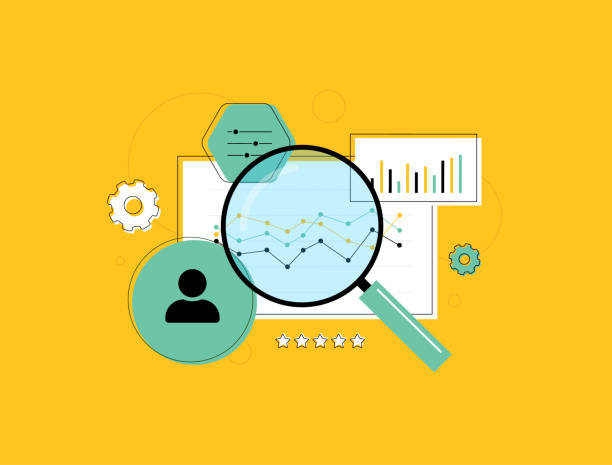
Content optimization is the beating heart of On-page SEO.
After identifying suitable keywords, the next step is to strategically place them within the page’s content.
This involves naturally using keywords in the main heading (H1), subheadings (H2, H3, etc.), and the main body of the text.
Your content should be written not only for search engines but, more importantly, for users; it must be comprehensive, informative, and readable.
Using short paragraphs, clear sentences, and bulleted lists can significantly improve readability.
Additionally, internal linking to other relevant pages within your website distributes SEO value across the site and helps search engines better understand your website’s structure.
This is an educational and guidance approach to improving rankings.
Below is a checklist for optimizing content and page structure in On-page SEO:
| Optimization Element | Description and Tips |
|---|---|
| Main Keyword in H1 | The main keyword should naturally appear in the page’s main heading (H1). |
| Subheadings (H2, H3, H4) | Use subheadings to segment content and incorporate related keywords. |
| Content Length | Comprehensive and in-depth content generally performs better (over 300-500 words). |
| Readability and Structure | Use short paragraphs, lists, and images to improve readability. |
| Keyword Density | Distribute keywords naturally throughout the text; avoid keyword stuffing. |
| Internal Linking | Link to other relevant and high-quality pages on your own website to distribute SEO value. |
| Content Updates | Regularly update old content to keep it relevant and fresh. |
Meta Tags and Their Role in On-page SEO
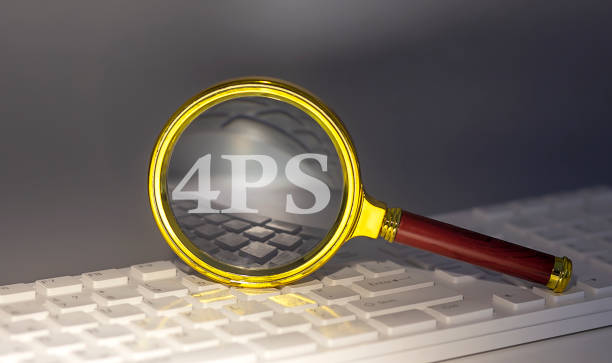
Meta tags, including the Title Tag and Meta Description, are crucial components in On-page SEO that directly influence how your page appears in search results.
The page title, located in the <title> tag, is the first thing users see in the Search Engine Results Page (SERP) and tells search engines what your page is about.
An optimized on-page SEO title should include your main keyword, be concise and appealing, and be no more than about 60 characters to be fully displayed.
Meta descriptions, although not directly impacting rankings, play a crucial role in encouraging users to click on your link.
These descriptions provide a brief and enticing summary of the page’s content and can include a Call to Action.
A strong meta description that includes relevant keywords significantly increases click-through rate (CTR).
This is a vital explanatory and guidance aspect for any SEO specialist that should not be overlooked.
Paying attention to these small yet powerful elements in on-page optimization can make a big difference in attracting traffic.
Are you tired of your company’s website not meeting your expectations? With RasaWeb, design a professional website that truly represents your business.
✅ Increase attraction of new customers and sales leads
✅ Boost your brand’s credibility and trust with your audience
⚡ Get a free website design consultation!
URL Structure and Optimized Internal Linking
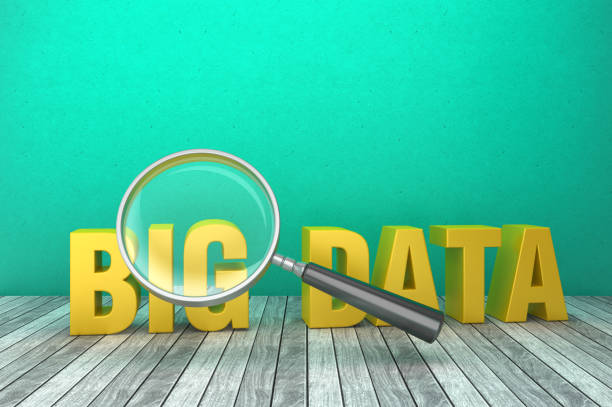
URL structure and internal linking are technical but highly important aspects of On-page SEO.
An SEO-friendly and readable URL should be short, descriptive, and include the page’s main keyword.
Avoiding complex and unclear URLs that contain irrelevant characters or long numbers helps search engines and users quickly understand the page’s content.
For example, URLs like `www.example.com/on-page-seo-introduction` are much better than `www.example.com/?p=123`.
Internal linking, meaning creating links from one page to another within the same website, is a powerful strategy for distributing “Link Juice” throughout the site, improving crawlability for search engines, and guiding users to relevant content.
This also encourages users to spend more time on your site and have a better user experience.
Using descriptive and relevant anchor texts in internal links gives more importance to the destination page.
These aspects are considered specialized guidelines for improving On-page SEO and directly impact the authority and discoverability of your pages.
On-page optimization would be incomplete without considering these two factors.
Site Speed and User Experience in On-page SEO
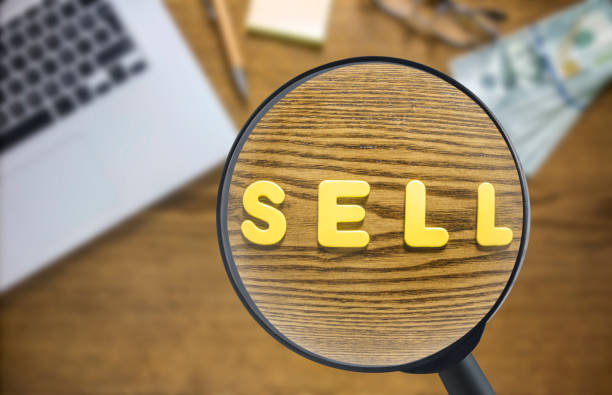
In today’s world, where internet speed and user attention are limited, site speed has become a critical ranking factor in On-page SEO.
Google has repeatedly emphasized that page load speed, especially on mobile devices, is an important factor in User Experience (UX) and consequently, ranking.
Tools like Google PageSpeed Insights and Core Web Vitals (including Largest Contentful Paint (LCP), First Input Delay (FID), and Cumulative Layout Shift (CLS)) are key metrics for evaluating your site’s speed.
Improving site speed can involve optimizing images, compressing CSS and JavaScript files, using caching, and choosing a reliable hosting provider.
Excellent user experience, beyond speed, includes responsive design for mobile, easy navigation, and engaging content.
The better experience users have on your site, the more likely they are to stay, which sends positive signals to search engines.
This analytical approach shows how technical aspects and user experience are intertwined in On-page SEO.
Overall, a high-speed site with excellent UX not only satisfies users but also signals to search engines that your site is high-quality and useful.
Optimizing Images and Multimedia Content

Images and multimedia content play a very important role in attracting users and improving their experience, but if not optimized correctly, they can harm site speed and ultimately negatively impact On-page SEO.
Image optimization includes compressing them without reducing quality, using appropriate formats (like WebP), and correct dimensions.
Another crucial point is the use of descriptive and relevant Alt tags for images.
Alt tags not only help search engines understand image content (which is especially important for image search) but are also essential for users who use screen readers.
Additionally, naming image files descriptively and including keywords helps their SEO.
For videos, using a Video Sitemap and providing transcripts or subtitles can help search engines index their content.
This aspect of on-page optimization is a specialized and highly influential one.
Below is a table of key tips for optimizing images in On-page SEO:
| Factor | Importance and Optimization Method |
|---|---|
| File Size | Compress images (online tools or plugins) to increase site load speed. |
| Image Format | Use optimized formats like WebP, which offer better compression than JPEG and PNG. |
| Alt Text Attribute | Write a short, accurate, and keyword-rich description for each image. |
| Image File Name | Name the file descriptively and relevant to the image content and keywords (e.g., on-page-seo-image.jpg). |
| Image Dimensions | Use appropriate dimensions for web display; avoid images with dimensions much larger than needed. |
| Lazy Loading | Load images only when the user scrolls to the relevant section. |
The Role of Structured Data (Schema Markup) in Improving On-page SEO
![]()
Structured Data or Schema Markup are small pieces of code added to your website to help search engines more accurately understand the content of your pages.
This data provides additional contextual information for search engines that goes beyond plain text.
For example, using schema, you can tell Google that a page is about a specific “product”, a “recipe”, a news “article”, or a movie “review”.
This deeper understanding allows search engines to display Rich Snippets like star ratings, product prices, recipe cooking times, or author images in search results.
These rich results attract more user attention and can significantly increase your Click-Through Rate (CTR), which directly impacts On-page SEO.
Using schema is a specialized and advanced step in on-page optimization that can differentiate your site from competitors and create a more powerful presence in SERPs.
This is like an explanatory and news update that Google has recently given more importance to.
Are you losing potential customers due to an unprofessional website? RasaWeb is your answer! With our specialized corporate website design services:
✅ Enhance your business’s credibility and standing
✅ Experience attracting more targeted customers
⚡ Act now for a free consultation!
On-page SEO Monitoring and Analysis Tools
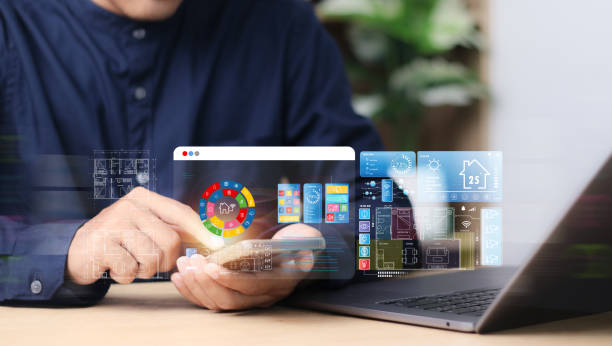
After implementing On-page SEO strategies, monitoring and performance analysis are essential.
Without accurate data, you cannot understand which strategies have been effective and where improvements are needed.
Tools like Google Search Console and Google Analytics are among the free and vital tools.
Google Search Console provides you with information on how Google crawls and indexes your site, potential errors, keywords for which your site appears, and their click-through rates.
Google Analytics also provides data related to site traffic, user behavior (such as bounce rate, time spent on page), and traffic source.
Paid tools like Ahrefs and SEMrush also provide more advanced capabilities such as competitor analysis, in-depth keyword research, and backlink monitoring.
Regular monitoring of these metrics helps you achieve continuous improvement in On-page SEO and adjust your strategies based on real data.
This is an important guidance and analytical section that ensures your long-term success.
Advanced On-page SEO and Future Trends

The world of SEO is constantly changing, and On-page SEO is no exception.
Advanced approaches in On-page SEO go beyond keyword optimization and focus on a deeper understanding of user intent, providing unparalleled content, and building topical authority.
One of the key concepts is E-A-T (Expertise, Authoritativeness, Trustworthiness), to which Google is giving increasing importance.
Your content should be created by experts, be authoritative, and trustworthy.
This is particularly vital for YMYL (Your Money Your Life) topics such as health and finance.
Furthermore, with the advancement of Artificial Intelligence (AI) and natural language processing, Google has become capable of understanding the complexities of human language and search intent in an unprecedented way.
This means that On-page SEO should focus more on providing comprehensive and natural answers to user questions rather than just repeating keywords.
These future trends create a questioning content: How can we perform best in On-page SEO in a future where machines understand content like humans? The answer lies in producing valuable, trustworthy content that meets real human needs.
Frequently Asked Questions
| Question | Answer |
|---|---|
| What is On-page SEO? | On-page SEO refers to a set of actions performed within a website and on page content to achieve a better ranking in search results. |
| Why is On-page SEO important for a website? | On-page SEO helps search engines better understand your page’s content and assess its importance. It also provides a better user experience for visitors. |
| What are the most important On-page SEO factors? | Key factors include keyword optimization, content quality, Title Tag, Meta Description, URL structure, heading tags (H1-H6), internal linking, and image optimization. |
| What role does the Title Tag play in On-page SEO? | The Title Tag is one of the most important On-page SEO factors, displaying your page’s title in search results and browser tabs. It should include the main keyword and be engaging. |
| What is the importance of Meta Description in On-page SEO? | The Meta Description provides a summary of the page’s content and, although not directly influencing ranking, can increase the click-through rate (CTR) by encouraging users to click. |
| How are keywords used in On-page SEO? | Keywords are phrases users employ to search for information in search engines. Proper and natural use of them in content helps the search engine identify the page’s topic. |
| What is internal linking and what are its benefits in On-page SEO? | Internal linking means creating links between different pages of a website. This helps distribute page authority, assists search engine robots in crawling, and improves user experience. |
| How does image optimization affect On-page SEO? | Image optimization includes compressing file size, using appropriate Alt tags, and proper file naming. This improves page load speed and helps search engines understand image content. |
| What does high-quality content mean in On-page SEO? | High-quality content means content that is comprehensive, accurate, unique, up-to-date, and user-friendly, addressing users’ needs. |
| What role does URL structure play in On-page SEO? | Readable, short URLs that include the main keyword help search engines and users better understand page content and improve the user experience. |
And other advertising services from RasaWeb Advertising Agency
Smart Social Media: A combination of creativity and technology to increase click-through rates through precise audience targeting.
Smart Advertising Campaign: An effective tool for campaign management with the help of user experience customization.
Smart Sales Automation: Professional optimization to increase sales using attractive UI design.
Smart Advertising Campaign: A creative platform for improving SEO ranking with precise audience targeting.
Smart Digital Advertising: Professional optimization for customer acquisition using precise audience targeting.
And over a hundred other services in internet advertising, advertising consultation, and organizational solutions.
Internet Advertising | Advertising Strategy | Advertorials
Sources
An Article on SEODigikala’s On-page SEO GuideSEO Tips from TabnakSearch Engine Optimization IRNA
With RasaWeb Afarin, elevate your business to new heights in the digital world! We pave the way for your online success by providing comprehensive digital marketing agency services, including responsive website design, SEO, and content creation.
📍 Tehran, Mirdamad Street, next to Bank Markazi, Kazeroon Janoubi Alley, Ramin Alley, No. 6

